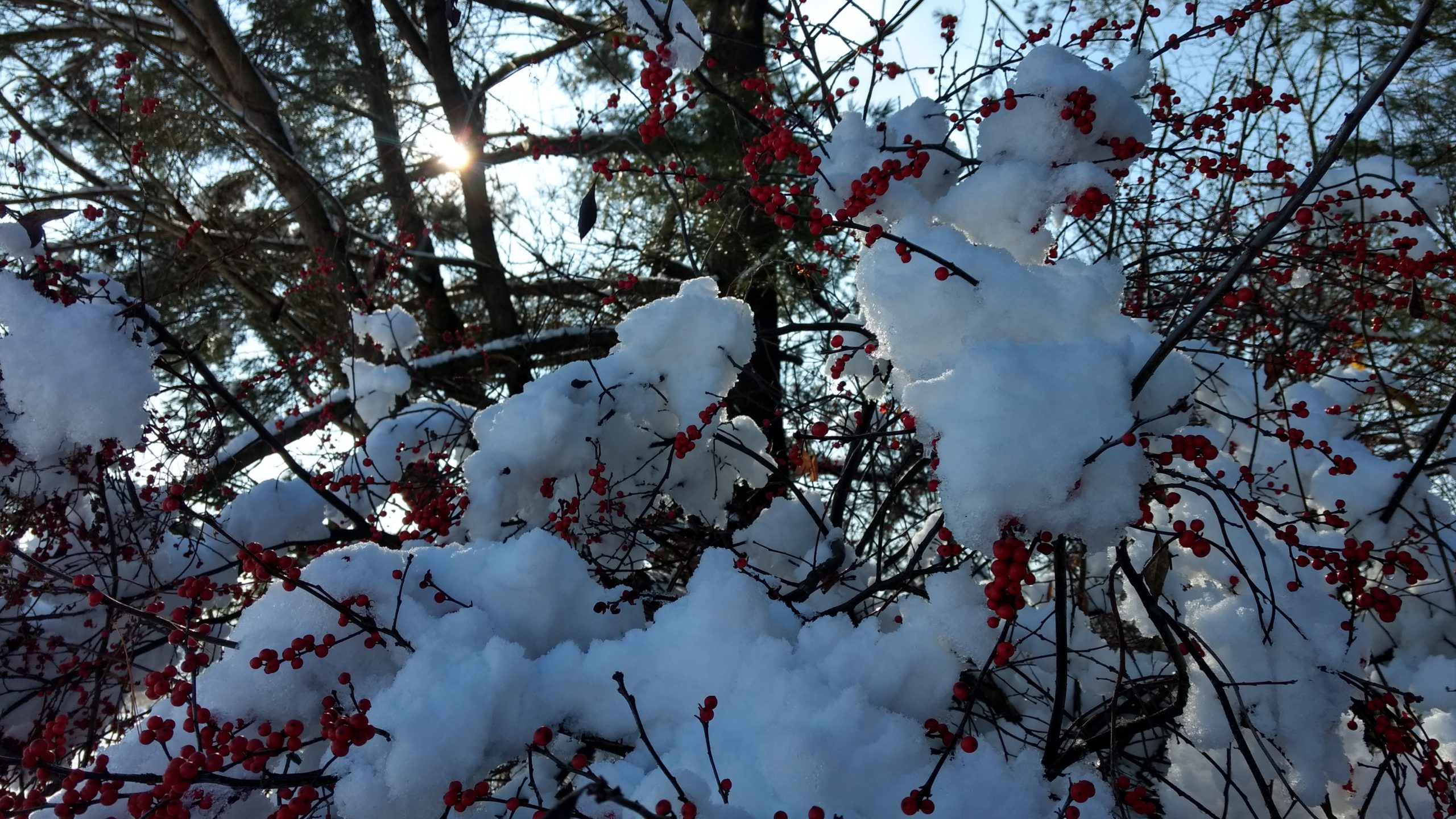Seasonal Considerations
Fall Planting Before Winter Grips Us

Though we’re late into the year and winter is in view, it is never too early (or too late) to plant for next year. The soil is still a bit warm and it’s not frozen quite yet, which makes for perfect dormant tree and shrub planting. After all, dormant plantings require less care than plantings in warmer weather. Planting a host of native woody plants while dormant is a great strategy, especially when planting smaller plants such 1 and 5 gallon. The stress of watering is nonexistent, and browse damage is lowered because the smaller plants attract less notice. But come spring they bud out and thrive as if you planted them straight out of the greenhouse.
Below are a couple tips from us on planning and planting late in the season.
Tip 1: Choosing what to plant is easier than you think!
Most native woody plant species respond very well to dormant season planting. Oaks, hickories, cherries, lindens and most native shrubs actually transplant better with a late-season planting than they do in the spring. Starting around Labor Day all the way to mid-December yields great results for these species. It is still very important that you match the species as close to its native habitat as possible so it can flourish in your yard. There are a couple of species that you might want to wait to plant until next year, though. Evergreens, birch and maple need to be planted when temps in the air and soil are a bit warmer, during early spring. These plants can stay dormant in a protected area over winter until ready to plant.
Tip 2: Plan on making your planting hole a bit bigger (wider that is) than you might normally for a spring or summer planting.
You still want to have good root-to-soil contact and have the root collar slightly above soil level, but having a wider hole will help minimize frost heave. You know, the thing that chucks late-season perennials out of the ground like cannon balls. The wider hole means softer earth around the plant, and the freeze/thaw action will be spread out over a wider area. This also allows a bit more moisture into the root zone, which helps it not to dry out too much.
Tip 3: Mulch! Mulch! Mulch!
When plating late in the season, be sure to add a bit of extra mulch to the planting. If you normally use 2”, then 3” might be a practice to consider. Mulch insulates the root zone from wild temperature changes and can decompose the following year to add nutrients to the soil, which is good! Chips, the regular kind, are best. For those of you that use other commercial options, we would recommend that you not. Cedar can slow root growth, and dyed chips don’t decompose properly.
Tip 4: Be sure to fence in your plant to keep out the critters.
Fencing is a recommendation I can’t stress enough for those of you with “browsers.” It’s not as taxing of an endeavor as you might think. 1 and 5 gallon material can be protected by 3’ chicken wire very well. Depending on plant size, only 3 to 6 linear feet of wire is usually needed to get the job done. You can also fence more than one plant into plant prediction areas, but that will need more wire. Make sure that you stake it with rebar or lath. I have tried to use the sprays in place of fencing, and it has failed me because I missed reapplying it after a rain. Plus, deer seem to think of the sprays more like hot sauce on wings rather than a deterrent.
Tip 5: Plant late to enjoy your outdoor space.
Late-season planting offers a host of practical advantages that can significantly enhance the success of your gardening goals. By allowing plants to focus on establishing robust root systems without the immediate demand for above-ground growth, late-season planting ensures long-term health and resilience. Lower temperatures can also be effective for pest and disease management. These cooler temperatures lead to fewer active pests, allowing plants to establish themselves securely. Best of all, late-season planting extends the overall growing season, providing plants with a headstart in root development and priming them for earlier and more robust above-ground growth by the time spring arrives. So embrace the chill and maximize your plants’ growth by planting late! Spend more time enjoying your garden and less time working on it—or at least lighten the workload! Stay warm and plant more!